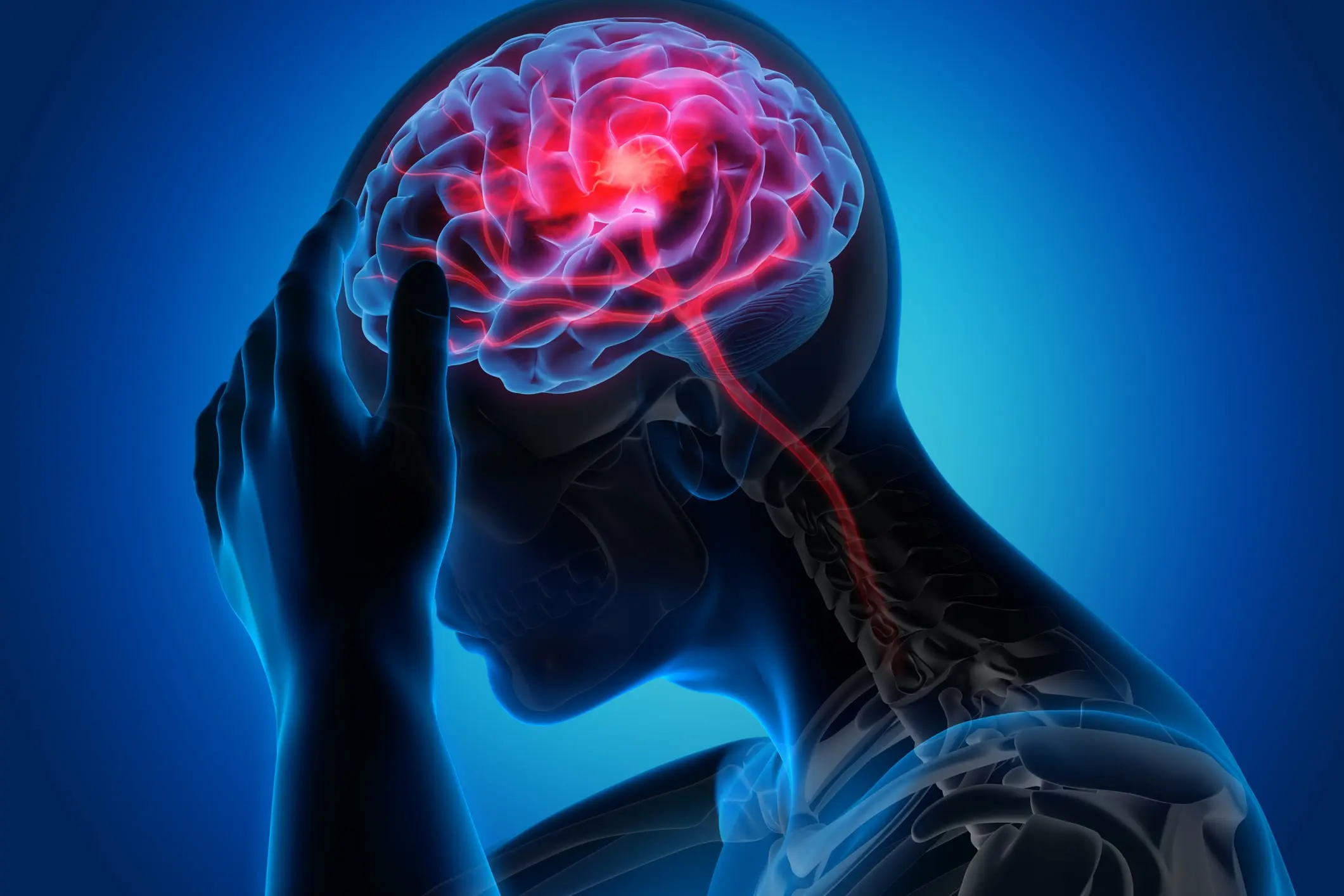Addiction isn’t just a shadow lurking in the corners of society; it’s an invasive force that thrives in silence and judgment.
This prejudice is known as addiction stigma, a hidden yet potent accomplice of addiction, fueling it and hindering recovery.
Here we expose just how incredibly harmful addiction stigma can be and shed light on the profound impact it has on those seeking recovery.
Types of Stigma
SOCIAL, SELF, AND STRUCTURAL
Stigma is a deeply ingrained social process that labels individuals or groups as undesirable or inferior, often creating barriers and perpetuating inequalities.
There are three primary types of stigma: social, self, and structural.
Social stigma refers to society’s negative stereotypes and prejudice towards a specific group, such as those struggling with addiction.
This can lead to discrimination and exclusion.
Self-stigma is the internalized shame and guilt individuals feel due to social stigma, leading them to view themselves negatively.
This often exacerbates feelings of worthlessness and can discourage individuals from seeking help.
Lastly, structural stigma is embedded within society’s institutions and systems, manifesting as unfair policies, practices, and laws that discriminate against stigmatized groups.
Each type of stigma works in a reinforcing cycle, significantly impacting the lives of those targeted and society.
| Types of Stigma | Description |
|---|---|
| Social Stigma | Social stigma refers to society’s negative attitudes, beliefs, and stereotypes toward individuals with addiction. It can result in discrimination, social exclusion, and the perception of moral weakness or character flaws. |
| Self Stigma | Self-stigma occurs when individuals internalize the negative stereotypes and societal judgments of addiction. It can lead to feelings of shame, low self-esteem, and self-blame, which can further hinder recovery and well-being. |
| Structural Stigma | Structural stigma refers to the policies, laws, and institutional practices perpetuating discrimination against individuals with addiction. It includes barriers to healthcare, employment, housing, and social services, limiting opportunities for recovery and societal reintegration. |
The Impact of Stigma on Addiction
Addiction and stigma share an intricate relationship, forming a destructive cycle that is challenging to break.
People grappling with addiction often find themselves stigmatized and stereotyped, as society labels them morally flawed or weak.
This negative social bias intensifies shame, guilt, and isolation among those afflicted, making it much harder for them to seek help.
They may hide their struggle and avoid treatment for fear of being ostracized.
Consequently, stigma perpetuates addiction by creating barriers to recovery, while obsession continues to fuel stigma.
Understanding this intersection is vital in fostering an empathetic approach towards addiction to break this cycle and promote recovery.
SOCIAL, CULTURAL, AND HISTORICAL CONTEXT OF ADDICTION STIGMA
Addiction stigma is deeply entrenched in our social, cultural, and historical fabric, often influenced by misconceptions and moralistic views of substance use.
Historically, addiction has been seen as a moral failing or a lack of willpower rather than a complex interplay of biological, psychological, and environmental factors1.
This perspective has led to the marginalization and criminalization of those struggling with substance use disorders instead of offering them the support and medical care they need.
Culturally, specific communities might stigmatize addiction more severely due to religious beliefs, social norms, or a lack of understanding about addiction as a disease.
Socially, media and popular culture have often portrayed individuals with addiction in negative, stereotypical ways, further perpetuating this stigma.
As a result, people dealing with addiction often face social exclusion, discrimination, and reduced opportunities, which can contribute to their addiction’s persistence and hinder recovery efforts.
The Historical Timeline of Addiction Stigma
| Year | Stigma Level | Notable Events | Contribution to Stigma |
|---|---|---|---|
| 1980 | High | Drug war escalation | The drug war heightened public fear and reinforced stereotypes of substance users as criminals, contributing to stigma. |
| 1990 | Moderate | Introduction of the DARE program | The program had mixed effects. It raised awareness but also potentially increased stigma by emphasizing drug abstinence. |
| 2000 | Moderate to High | Opioid crisis begins | The crisis was initially seen as a criminal rather than a public health issue, contributing to stigma. |
| 2010 | High | Increased public awareness of the opioid epidemic | While awareness grew, the stigma remained high as media often depicted those with addiction negatively. |
| 2020 | Moderate | Increased access to and understanding of treatment options | A greater understanding of addiction as a health issue has started to reduce stigma, but significant challenges remain. |
STEREOTYPES AND MISCONCEPTIONS ASSOCIATED WITH ADDICTION
The field of addiction is riddled with numerous stereotypes and misconceptions that further intensify the stigma surrounding it.
A prevalent misconception is that addiction is solely the result of a lack of willpower or moral failure, overlooking that it is a complex medical condition influenced by genetics, environment, and psychological factors.
Another stereotype portrays individuals with addiction as dangerous or violent, which is not inherently true and only creates fear and promotes discrimination.
There’s also the erroneous belief that those suffering from addiction must hit “rock bottom” before they can successfully seek help or recover, discouraging early intervention and leading to unnecessary harm.
These misconceptions contribute to the overall stigma, fostering an environment of judgment and blame instead of understanding and support, making it more difficult for individuals struggling with addiction to seek and receive the help they need.
| Common Myths | Facts | Impact on Stigma |
|---|---|---|
| Addiction is a choice. | Addiction is a complex disease affecting the brain’s reward, motivation, and memory functions. | Perpetuates blame and misunderstanding. |
| Addicts could stop if they wanted to. | Stopping requires more than willpower; it often requires medical intervention and long-term support. | Leads to a lack of empathy and support for addicts. |
| Addiction is a moral failing. | Addiction is a health issue, not a moral issue. | Foster’s judgment and discrimination. |
The Effects of Stigma on Individuals with Addiction
PSYCHOLOGICAL IMPACT: SHAME, GUILT, AND LOW SELF-ESTEEM
The psychological impact of addiction and the associated stigma is profound, often manifested as feelings of guilt, shame, and lowered self-esteem.
Individuals grappling with addiction frequently internalize societal judgment, leading to self-stigma.
They may feel deep guilt for substance use and its consequences on their lives and loved ones.
This guilt, coupled with the shame of perceived societal judgment, can heavily damage their self-esteem, making them feel unworthy or incapable of recovery.
The cycle of substance use and the resulting guilt and shame further feed into the addiction, creating a self-perpetuating process that is hard to break.
This damaging psychological impact not only exacerbates the addictive behaviors but also acts as a significant barrier to seeking help and treatment, making the journey toward recovery even more challenging.
BARRIERS TO SEEKING HELP: FEAR OF JUDGEMENT AND DISCRIMINATION
Stigma casts a long and inhibiting shadow over the pathway to recovery from addiction.
Fear of judgment and discrimination is a potent deterrent for those seeking help for their substance use disorders.
Anticipated stigma can lead to embarrassment or shame, causing individuals to deny their struggle or hide their substance use, which delays recognizing the problem and initiating treatment.
Furthermore, fear of potential discrimination, such as losing one’s job or facing unfair treatment in healthcare settings, can discourage those in need from reaching out for assistance.
These barriers, erected by societal and self-stigma, hinder access to essential resources and support networks, complicating the recovery process and perpetuating the cycle of addiction.
It’s thus imperative to dismantle these barriers by addressing the stigma surrounding addiction.
SOCIAL ISOLATION AND STRAINED RELATIONSHIPS
The grip of addiction often extends beyond the individual, casting its shadow over their social connections and leading to isolation and strained relationships.
Due to societal stigma, individuals with substance use disorders may be ostracized or avoided by their friends, family, and community.
This social isolation can deepen feelings of loneliness and despair, fueling further substance use as a form of self-medication.
Additionally, addiction can strain personal relationships, as trust may be eroded by the behaviors associated with substance use, such as dishonesty or neglect of responsibilities.
These strained relationships and the associated emotional distress can exacerbate the addiction, creating a self-perpetuating cycle.
The supportive role of social connections in recovery emphasizes the necessity of combating stigma to prevent this cycle of isolation and addiction.
EMPLOYMENT AND EDUCATIONAL CHALLENGES
The stigma surrounding addiction often translates into significant challenges in employment and education.
Employers, influenced by negative stereotypes and misconceptions about addiction, may hesitate to hire individuals with a known history of substance use disorders, fearing potential productivity issues or workplace disruptions.
This discrimination can lead to unemployment or underemployment among those trying to recover, creating financial instability that can exacerbate stress and trigger substance use.
In the educational domain, students struggling with addiction may face exclusion, reduced support, or punitive actions instead of receiving help.
They may also struggle with academic performance due to the direct cognitive impacts of substance use.
These employment and educational challenges hinder personal growth and socio-economic stability and pose significant barriers to recovery and reintegration into society.
The Impact of Stigma on Recovery
ACCESSING TREATMENT AND SUPPORT SERVICES
The stigma associated with addiction poses significant hindrances to accessing treatment and support services.
Fear of being labeled or discriminated against may deter individuals from seeking help or acknowledging their substance use struggles.
Influenced by the same societal biases, health care providers may unintentionally provide substandard care or display less empathy towards those with addiction, creating a discouraging environment.
At a structural level, stigmatizing policies may limit the availability or accessibility of substance use disorder treatment services, especially for marginalized populations.
Furthermore, the emphasis on punitive approaches over therapeutic interventions in many legal systems often prioritizes incarceration over treatment.
Each of these factors contributes to a climate where those most need help are the least likely to receive it, underscoring the urgent need to combat addiction stigma at all levels of society.
RELAPSE AND DISCOURAGEMENT IN THE FACE OF STIGMA
Stigma often looms heavily over the recovery journey, particularly during relapse.
Relapse, a standard part of the recovery process from addiction, can be viewed by society and individuals as a personal failure rather than an expected hurdle on the road to recovery.
This perspective is amplified by stigma and can exacerbate guilt, shame, and worthlessness, potentially triggering further substance use.
Moreover, societal stigma may limit the availability of ongoing support and second chances for those who relapse, pushing them into a cycle of discouragement and repeated substance use.
It is, therefore, essential to address the pervasive stigma associated with addiction and promote an understanding of relapse as a component of the recovery process, not a failure of character or will.
LIMITED AVAILABILITY OF RESOURCES AND EFFECTIVE INTERVENTIONS
The stigma surrounding addiction doesn’t only impact individuals directly; it also indirectly shapes the landscape of available resources and interventions.
Misunderstandings and negative attitudes about addiction can lead to lower prioritization of funding for research, treatment, and support services.
Consequently, this results in limited availability and accessibility of effective interventions for those who need them.
Stigma also influences the design of some policies and programs, which may emphasize punitive measures over comprehensive, evidence-based treatment strategies.
Even when resources are available, stigma can deter individuals from accessing these services due to fear of judgment or discrimination.
Thus, tackling stigma is crucial in improving the availability, accessibility, and utilization of effective interventions for addiction.
IMPACT ON MENTAL HEALTH AND WELL-BEING DURING THE RECOVERY PROCESS
The stigma associated with addiction can significantly impact mental health and well-being during recovery.
Negative societal attitudes can lead to internalized self-stigma, which can exacerbate existing mental health issues or contribute to developing new ones, such as depression or anxiety.
The constant fear of judgment or discrimination can generate chronic stress, further hindering healing.
Furthermore, stigma can make it difficult to form or maintain supportive social relationships, leading to isolation and loneliness.
This absence of a support network can be particularly detrimental during the vulnerable recovery phase.
The sense of shame and hopelessness fueled by stigma can also undermine motivation to continue recovery and contribute to relapse.
Hence, addressing stigma is crucial to improving mental well-being and fostering successful long-term recovery from addiction.
Stigma in Healthcare Settings
ATTITUDES AND BIASES AMONG HEALTHCARE PROFESSIONALS
Attitudes and biases among healthcare professionals play a significant role in perpetuating the stigma surrounding addiction.
Some healthcare professionals may hold negative attitudes towards individuals struggling with addiction, viewing it as a moral failing rather than a medical condition2.
These biases can lead to discrimination, such as unequal treatment, dismissal of patient concerns, and a lack of empathy.
Stigmatizing attitudes can also affect the quality of care provided to individuals with addiction, leading to suboptimal treatment outcomes.
Healthcare professionals must recognize their biases, undergo training to address stigma, and cultivate a compassionate and non-judgmental approach toward individuals seeking help for addiction.
By fostering an inclusive and supportive environment, healthcare professionals can play a pivotal role in reducing stigma and promoting better outcomes for individuals affected by addiction.
DISPARITIES IN TREATMENT QUALITY AND ACCESS
Disparities in treatment quality and access further exacerbate the impact of stigma on addiction.
Individuals facing addiction, especially those from marginalized communities, often encounter barriers when seeking treatment.
Limited access to affordable, evidence-based interventions, including inpatient treatment and counseling services, can hinder their recovery.
Additionally, disparities in healthcare systems, such as unequal distribution of resources and treatment facilities, contribute to uneven treatment outcomes.
Socioeconomic factors, systemic biases, and discriminatory practices3 often influence these disparities.
Addressing these disparities requires a comprehensive approach that includes increasing funding for addiction treatment, expanding access to care in underserved areas, and implementing policies that ensure equitable treatment opportunities for all individuals regardless of their background.
By addressing these disparities, we can help mitigate the impact of stigma and provide equal opportunities for recovery and well-being.
INFLUENCE ON PATIENT-PROVIDER COMMUNICATION AND TRUST
The influence of stigma on patient-provider communication and trust is significant, often resulting in barriers to effective healthcare delivery.
The stigma surrounding addiction can create a climate of judgment, shame, and fear, making individuals with addiction reluctant to disclose their struggles or seek help.
This breakdown in communication hampers the patient-provider relationship, limiting the opportunity for open and honest dialogue.
Healthcare providers may also hold stigmatizing attitudes, further exacerbating the issue.
When trust is compromised, individuals may hesitate to disclose crucial information, leading to suboptimal treatment outcomes.
To mitigate this impact, healthcare providers must actively combat stigma, cultivate empathy, and create a safe and non-judgmental space where individuals with addiction feel comfortable sharing their experiences.
Building trust and fostering effective communication is essential in providing comprehensive care and supporting individuals on their path to recovery.
Addressing and Reducing Stigma
POTENTIAL FUTURE IMPACTS IF STIGMA CONTINUES
If the stigma surrounding addiction continues unchecked, it will likely have significant future impacts on individuals, communities, and society.
Individuals with addiction may continue to face barriers in seeking help, leading to prolonged suffering, increased health risks, and higher rates of overdose and related deaths.
Stigma can also perpetuate social isolation and hinder opportunities for employment, education, and housing, exacerbating the cycle of addiction and marginalization.
Communities may experience increased crime rates, strained healthcare systems, and economic burdens associated with untreated addiction.
Moreover, the societal cost of stigma includes lost productivity, increased healthcare expenses, and limited resources for prevention and treatment.
To prevent these future impacts, it is crucial to actively combat stigma, promote understanding and support, and ensure equitable access to effective interventions for individuals struggling with addiction.
PROMOTING EMPATHY AND UNDERSTANDING
Promoting empathy and understanding is crucial in combating the stigma surrounding addiction.
Empathy allows individuals to connect with and understand the experiences and challenges faced by those struggling with addiction.
By fostering empathy, we can reduce judgment and promote compassion, recognizing addiction as a complex health issue rather than a moral failing.
Education and awareness campaigns can significantly increase understanding by providing accurate information, dispelling myths, and humanizing the experiences of individuals with addiction.
It is essential to encourage open conversations, create safe spaces for sharing stories, and promote empathy among healthcare professionals and within communities and society at large.
By promoting empathy and understanding, we can create a supportive environment that encourages individuals to seek help, reduces stigma, and facilitates the provision of compassionate care for those affected by addiction.
CHALLENGING STEREOTYPES AND ENCOURAGING POLICY CHANGES
Challenging stereotypes and encouraging policy changes are both crucial in reducing discrimination and stigma surrounding addiction.
Challenging stereotypes involve debunking misconceptions and promoting an accurate understanding of addiction as a complex medical condition.
By sharing stories of recovery, emphasizing the diversity of experiences, and humanizing individuals affected by addiction, we can break down harmful stereotypes and foster empathy and compassion.
Simultaneously, policy changes play a significant role in combating discrimination.
Advocating for laws and regulations prioritizing prevention, treatment access, and anti-discrimination measures can create a more supportive environment for individuals with addiction.
By challenging stereotypes and pushing for policy changes, we can progress toward a society that embraces empathy, supports recovery, and provides equal opportunities for all individuals affected by addiction.
| Proposed Solutions | Stigma Reduction Strategies |
|---|---|
| Education and Awareness | Implement comprehensive public education campaigns to dispel myths, challenge stereotypes, and promote an accurate understanding of addiction as a medical condition. |
| Healthcare Provider Training | Provide training programs for healthcare professionals to increase their knowledge about addiction, develop empathy, and address personal biases. |
| Policy Changes | Advocate for policy changes focusing on addiction as a public health issue rather than a criminal. Implement harm reduction approaches, expand access to evidence-based treatments, and ensure parity in insurance coverage for addiction services. |
| Peer Support and Community Engagement | Encourage the involvement of individuals with lived experiences of addiction in advocacy efforts, support groups, and community initiatives. |
| Media Representation | Promote responsible and accurate portrayal of addiction in the media. Share stories of recovery, resilience, and the diversity of experiences to challenge stereotypes and humanize individuals affected by addiction. |
Compassionate Stigma-Free Treatment
Compassionate, stigma-free treatment is undeniably the way to go when addressing addiction4.
By adopting a compassionate approach, our providers at Cornerstone Healing Center in Scottsdale, AZ, have created a safe and non-judgmental environment where individuals with addiction feel respected, understood, and supported.
This approach not only helps to alleviate the shame and guilt often associated with addiction but also fosters open communication and trust between our patients and providers.
Cornerstone Healing Center recognizes addiction as a medical condition and prioritizes evidence-based interventions, individualized treatment plans, and long-term support.
By fostering understanding, providing education, and implementing inclusive practices, we can create a compassionate environment that supports individuals in their recovery journey.
Together, we can break down barriers, dispel judgment, and pave the way for a future where addiction is met with empathy, understanding, and practical support.
So let’s ignite hope, banish stigma, and build a world where recovery thrives, and everyone is treated with dignity and respect!
If you or someone you love is struggling with addiction, please get in touch with us today for a free and confidential assessment.
SOURCES
[1] Addiction as a brain disease revised: why it still matters, and the need for consilience
[2] Addiction is a disease: We must change our attitudes toward addicts
[4] Words Matter – Terms to Use and Avoid When Talking About Addiction
Published: 6/21/2023
Contributor: Julie Miller
Co-Contributor: Susana Spiegel








